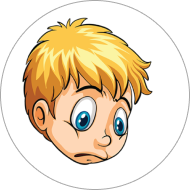Stunted Chin
Sleep dysfunctions in children can contribute to the development of stunted chin (or micrognathia) through various mechanisms, primarily related to breathing patterns, jaw development, and overall facial growth. Here’s how these sleep-related issues may lead to a stunted chin:
- Mouth Breathing
- Jaw Development and Alignment
- Facial Muscle Tone and Development
- Sleep Quality and Growth Hormone Regulation
- Nutritional Factors
- Psychosocial Factors
- Long-Term Consequences
- Intervention and Management
In summary, sleep dysfunctions in children can contribute to the development of a stunted chin through mechanisms related to altered breathing patterns, jaw development, hormonal regulation, and overall health factors. Addressing these sleep issues through appropriate interventions can help promote healthier growth and development of the jaw and chin.
Sleep dysfunctions in children can contribute to the development of stunted chin (or micrognathia) through various mechanisms, primarily related to breathing patterns, jaw development, and overall facial growth. Here’s how these sleep-related issues may lead to a stunted chin:
1. Mouth Breathing
- Altered Jaw Positioning: Children with sleep dysfunctions, particularly obstructive sleep apnea (OSA), may breathe through their mouths instead of their noses. Mouth breathing can lead to an improper resting position of the jaw, which may inhibit the forward growth of the mandible (lower jaw) and contribute to a stunted chin.
- Reduced Tongue Posture: The tongue plays a crucial role in oral and facial development. When children breathe through their mouths, the tongue may rest lower in the mouth rather than pressing against the roof of the mouth. This can negatively affect the growth of the jaw and face, contributing to a stunted chin.
2. Jaw Development and Alignment
- Narrowing of the Dental Arch: Sleep is necessary for consolidating learning, including language skills. Inadequate or poor-quality sleep affects the ability to retain new words, grammar rules, and sentence structures. Children with sleep dysfunctions may struggle to recall and apply speech patterns they’ve been exposed to during the day.
- Impaired Maxillomandibular Relationship: The relationship between the upper (maxilla) and lower (mandible) jaws is crucial for proper facial aesthetics. Sleep dysfunctions can interfere with this relationship, leading to underdevelopment of the mandible and a stunted chin.
3. Facial Muscle Tone and Development
- Reduced Muscle Tone: Sleep dysfunctions may lead to altered muscle tone in the face and jaw, affecting how the muscles function during growth. Insufficient muscle tone can inhibit proper jaw positioning and growth, contributing to a stunted chin.
- Abnormal Oral Habits: Children with sleep issues may develop abnormal oral habits (like thumb sucking or prolonged pacifier use) that can affect jaw development and lead to a stunted chin.
4. Sleep Quality and Growth Hormone Regulation
- Hormonal Impact: Sleep is crucial for the secretion of growth hormones, which are vital for overall growth and development, including the development of facial structures. Sleep dysfunctions can lead to reduced growth hormone secretion, potentially impacting jaw and chin development.
- Disrupted Sleep Cycles: Poor sleep quality can affect the stages of sleep that are most conducive to growth, further inhibiting the development of the mandible and facial structures.
5. Nutritional Factors
- Dietary Impact: Children experiencing sleep dysfunctions may have irregular eating habits or poor nutrition, which can affect overall growth, including the development of the jaw and chin.
- Increased Risk of Obesity: Sleep dysfunctions can lead to weight gain, which may affect facial structure. For example, obesity can contribute to fatty tissue accumulation in the neck, impacting the appearance of the chin.
6. Psychosocial Factors
- Behavioral Issues: Sleep dysfunctions can contribute to behavioral problems, which may lead to neglect of proper oral hygiene or dental care. Poor dental health can affect the alignment and development of the jaw, potentially contributing to a stunted chin.
- Anxiety and Stress: Increased anxiety and stress levels associated with sleep dysfunctions can influence muscle tension and relaxation patterns, potentially impacting jaw growth and positioning.
7. Long-Term Consequences
- Progressive Jaw Discrepancies: If sleep dysfunctions lead to stunted chin development, it may become more pronounced over time. This can result in more significant orthodontic and facial issues as the child grows.
- Need for Orthodontic Treatment: A stunted chin may lead to malocclusion (improper bite), necessitating orthodontic intervention to correct jaw alignment and facial aesthetics.
8. Intervention and Management
- Early Diagnosis: Identifying and addressing sleep dysfunctions early can help prevent negative impacts on jaw development and chin formation.
- Collaborative Care: A multidisciplinary approach involving pediatricians, dentists, and sleep specialists can effectively manage sleep dysfunctions and their effects on facial growth.
In summary, sleep dysfunctions in children can contribute to the development of a stunted chin through mechanisms related to altered breathing patterns, jaw development, hormonal regulation, and overall health factors. Addressing these sleep issues through appropriate interventions can help promote healthier growth and development of the jaw and chin.

